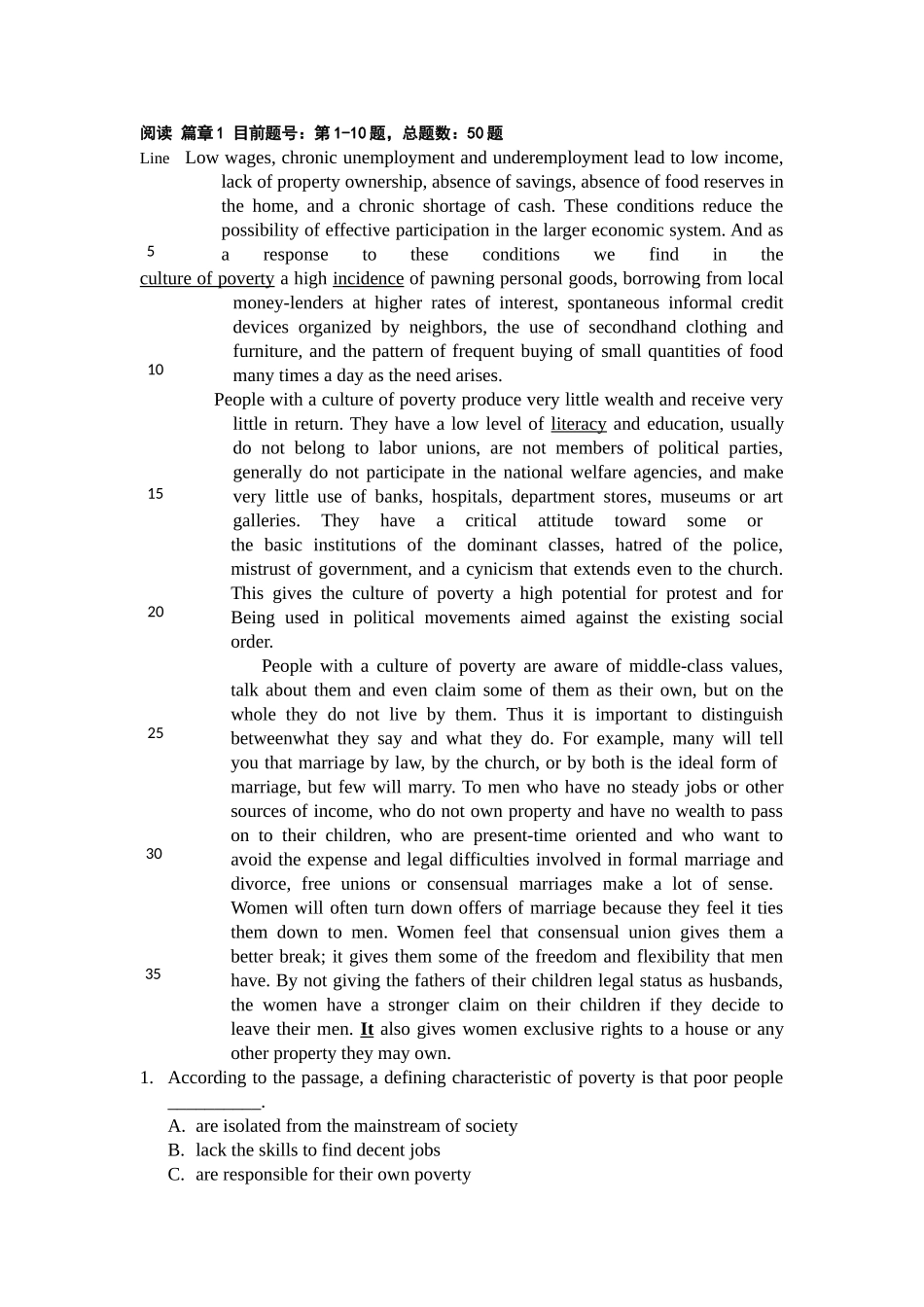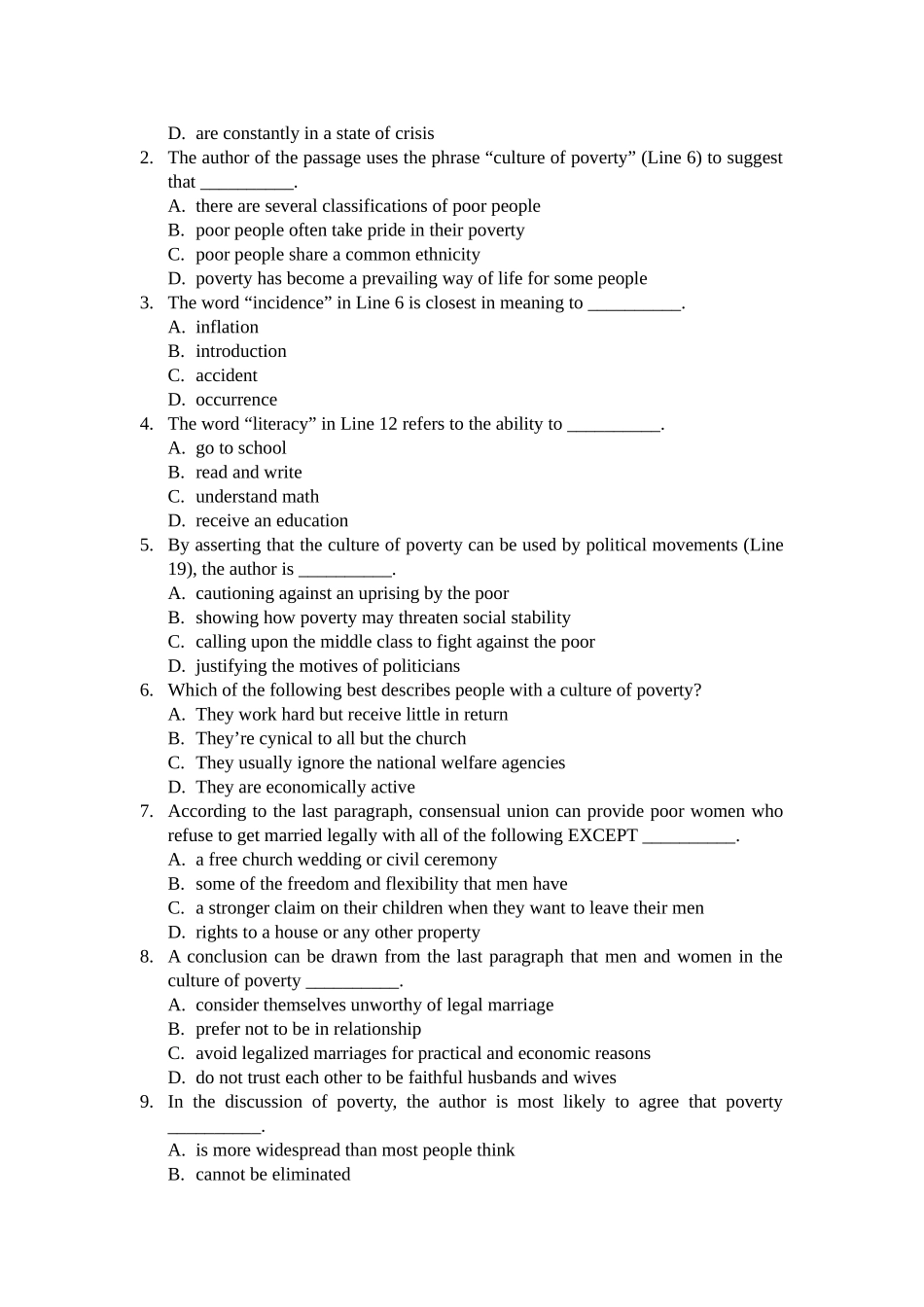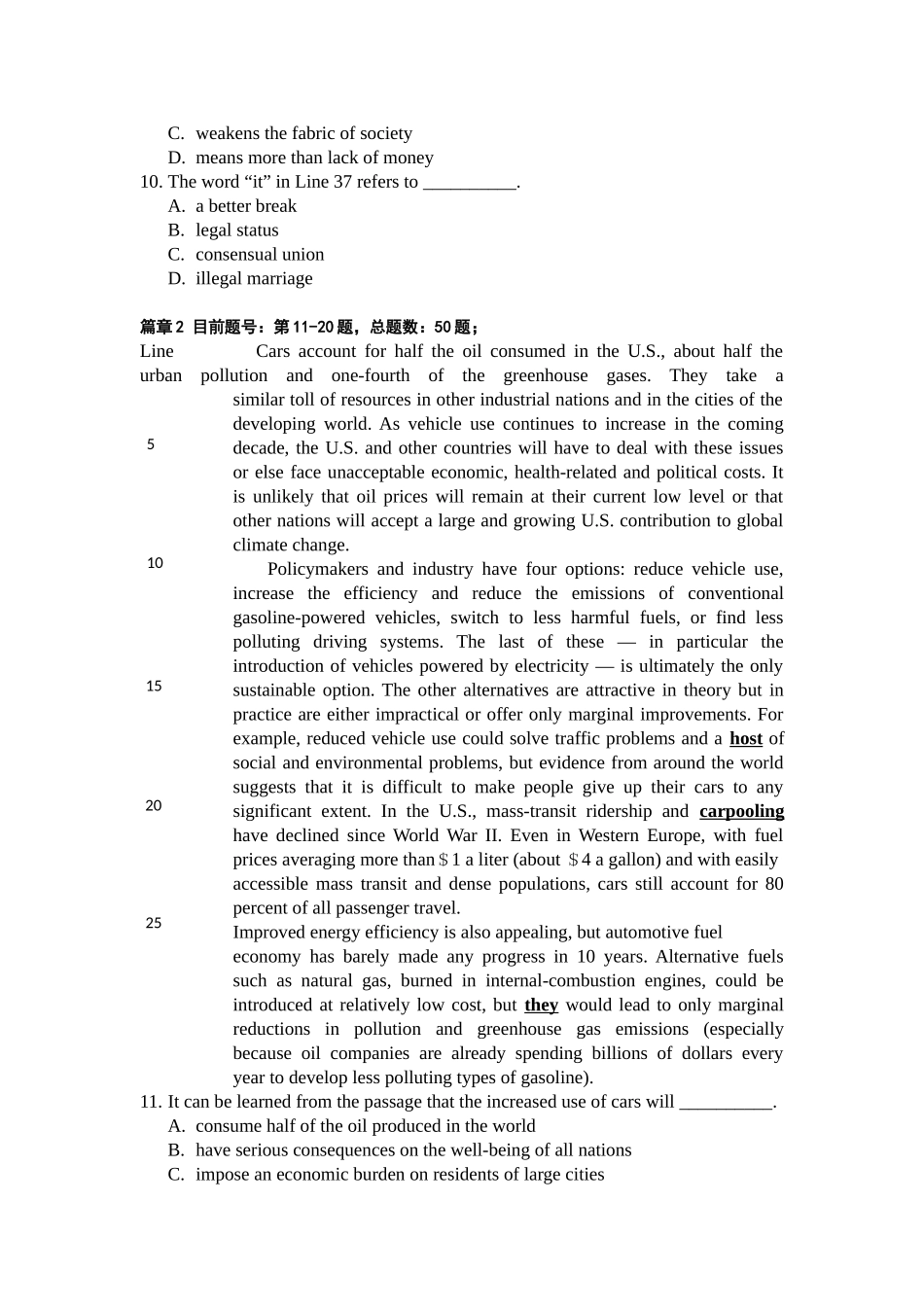阅读 篇章 1 目前题号:第 1-10 题,总题数:50 题Line Low wages, chronic unemployment and underemployment lead to low income, lack of property ownership, absence of savings, absence of food reserves in the home, and a chronic shortage of cash. These conditions reduce the possibility of effective participation in the larger economic system. And as a response to these conditions we find in theculture of poverty a high incidence of pawning personal goods, borrowing from local money-lenders at higher rates of interest, spontaneous informal credit devices organized by neighbors, the use of secondhand clothing and furniture, and the pattern of frequent buying of small quantities of food many times a day as the need arises. People with a culture of poverty produce very little wealth and receive very little in return. They have a low level of literacy and education, usually do not belong to labor unions, are not members of political parties, generally do not participate in the national welfare agencies, and make very little use of banks, hospitals, department stores, museums or art galleries. They have a critical attitude toward some or the basic institutions of the dominant classes, hatred of the police,mistrust of government, and a cynicism that extends even to the church.This gives the culture of poverty a high potential for protest and forBeing used in political movements aimed against the existing socialorder. People with a culture of poverty are aware of middle-class values,talk about them and even claim some of them as their own, but on thewhole they do not live by them. Thus it is important to distinguishbetweenwhat they say and what they do. For example, many will tellyou that marriage by law,...


